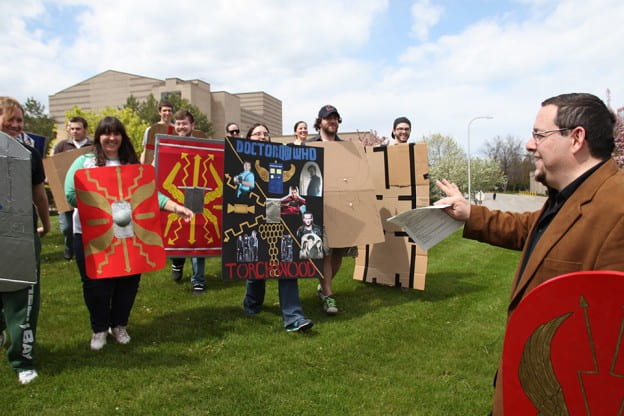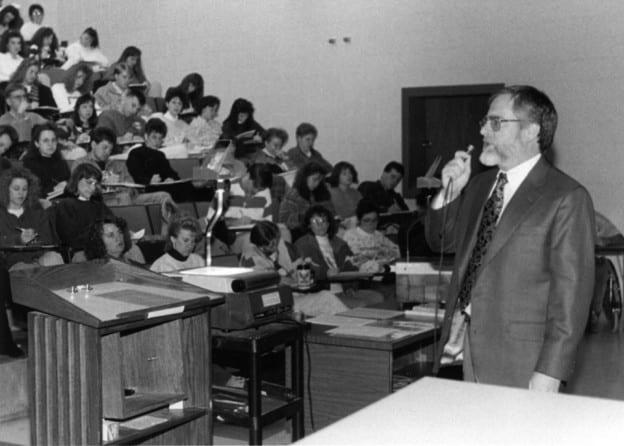With enrollment of about 6,700 students and roughly 175 full-time professors, UW-Green Bay is a fair-size university but nowhere near the largest in the state. That would be UW-Madison, enrollment 42,000, followed by Milwaukee, 28,000; Oshkosh, 13,000; and Whitewater, 12,000. There is at least one area, though — excellence in teaching — where the argument can be made UW-Green Bay outshines schools much older and many times its size. Exhibit A would be the prestigious Teaching Excellence Awards presented by the UW System Board of Regents, selected from faculty members at each of the state’s 13 public universities and 13 two-year colleges. The Regents have honored 72 individuals and departments — three per year — since initiating the program in 1992. UW-Green Bay faculty members have won the award a remarkable nine times. (We did the math: A university that employs 2.5 percent of the state’s professoriate has grabbed 12.5 percent of the top-teacher awards.) UWGB historians Clif Ganyard (2014) and Gregory S. Aldrete (2015), are the most recent, earning individual honors in back-to-back years.
First award-winner, prolific author
Climate and meteorology expert Joseph Moran, the Barbara Hauxhurst Cofrin Professor in Natural Sciences, was the first UW-Green Bay faculty member to earn the prestigious UW System Board of Regents award for teaching excellence. (He was also one of the first in the state — he received the honor in 1993, the program’s second year.) By that time, Moran was the author or co-author of nearly a dozen textbooks, a claim to fame since his earliest days with UW-Green Bay. In 1973, Moran and faculty colleagues Michael Morgan and James Wiersma had collaborated in writing the widely used and, for advocating an ecosystems approach, groundbreaking text Introduction to Environmental Sciences, published by Little, Brown. It was the first textbook produced by a UW-Green Bay faculty team. Moran retired from the faculty in 2001.

